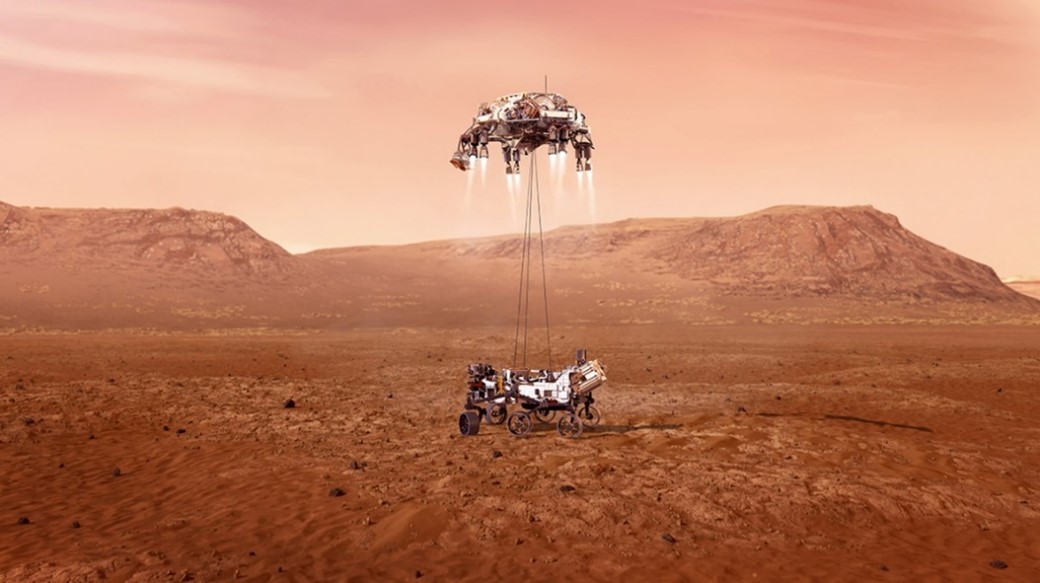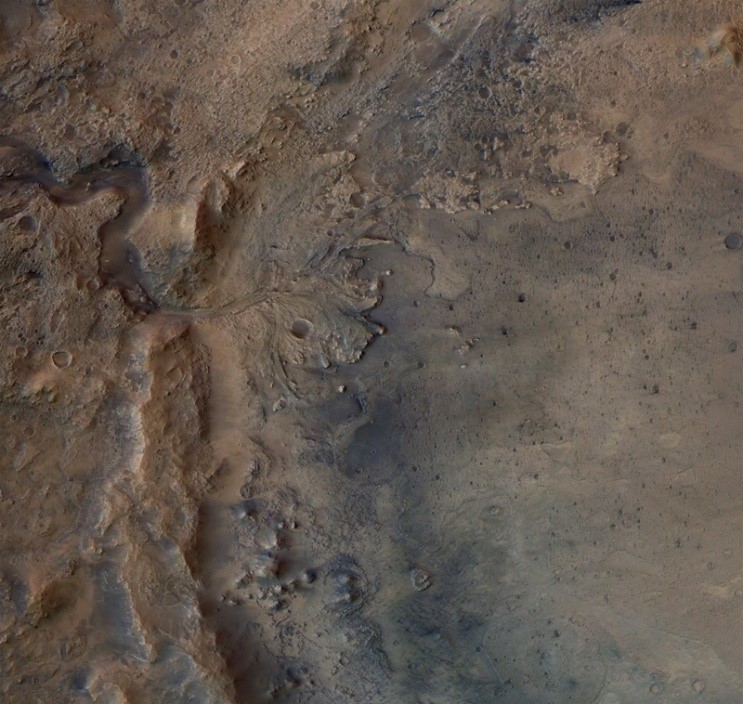Mars calls, Perseverance answers
February 15, 2021
By Nick Eakes
Mars is the only planet known to be completely inhabited by robots – and there are more on the way. After a long and lonely journey through inter-planetary space, NASA’s newest Mars rover, Perseverance, is slated to reach the surface of the red planet on Thursday, February 18, 2021, at 3:55 p.m. EST.
Launched on July 30 2020, humanity’s next robotic ambassador to Mars has traversed almost 300 million miles of open space over the last 6 months. NASA and the Jet Propulsion Laboratory (JPL) officially coined this mission Mars 2020 before later naming the rover Perseverance.

The mission’s scientific tests will just be getting started after a safe entry, descent and landing to the Martian surface on February 18th. Since the Martian atmosphere is much thinner than Earth’s, this task will require the spacecraft to deploy parachutes and to fire engines to slow from 12,000 mph to 2 mph in just a matter of seconds upon entry. Once successfully slowed, a sky crane and cables will help the rover to gently touch down on Mars.
The primary mission of Mars 2020 is to further study the diverse geology of Mars. Perseverance will collect and analyze rock and soil samples with the ultimate goal of finding signs of ancient life. The 6-wheeled rover hosts a variety of scientific instruments to help accomplish this task. Check out the NASA/JPL Fact Sheet for a more in-depth look at these instruments and their experiments.
Though Mars surely isn’t the kind of place to raise your kids in 2021 (with an average surface temperature of -81°F and thin, oxygen-poor atmosphere,) it is possible that at some point in its history, Mars was a more inviting and potentially habitable world. Much like digging for fossils here on the Earth, a deeper exploration and analysis of Martian geology will help to paint a picture of what the planet looked like in the past.

Credit: ESA/DLR/FU-Berlin
The intended landing site for Perseverance, Jezero Crater, is where Perseverance will explore the inner workings of an ancient Martian riverbed. Ancient riverbeds are thought to provide the best possibility for identifying, and even sampling, ancient microbial life. Eventually, scientists hope to return the samples collected by Perseverance back to Earth for further analysis.
In addition to sampling Mars’ surface, Mars 2020 seeks to test new technologies in the Martian environment. Perseverance’s companion on this mission is a robotic helicopter, named Ingenuity. This helicopter will perform the first powered flight on the surface of another world.
Perseverance and Ingenuity are set to continue exploration of the surface for at least one Martian year (687 Earth days) after landing. Hopefully, the Mars 2020 mission will continue to be our eyes and ears on the red planet for years to come, much like the veteran Mars rovers – Curiosity, Sojourner, Spirit, and Opportunity.
How can I participate in this historic moment?
NASA is seeking passionate students and members of the public to participate in the Mission to Mars Student Challenge in the days approaching Perseverance’s landing. Students, parents, and teachers can participate in activities including designing your own Mars mission through virtual events culminating in a YouTube live stream on landing day. The frontiers of space are calling to all of us – and human perseverance continues to answer that call.
Here’s what you need to know about the landing:
Landing Time: Thursday, February 18 2021, 3:55 p.m. EST
Landing Site: Jezero Crater
How to watch: Live landing broadcast begins: 2/18/21 at 11:15 a.m. PST / 2:15 p.m. EST https://mars.nasa.gov/mars2020/timeline/landing/watch-online/
How to follow: @NASAPersevere and @NASAMars on Twitter and Facebook, and the hashtag #CountdownToMars
To learn more about Morehead’s role in training NASA astronauts, and much more, check out www.moreheadplanetarium.org/our-history.
You can also join us for the 2021 NC Statewide Star Party! This year’s theme is “Moon and Mars.” Find instructions for making your own cardboard rover and paper Mars helicopter at the Star Party webpage.
